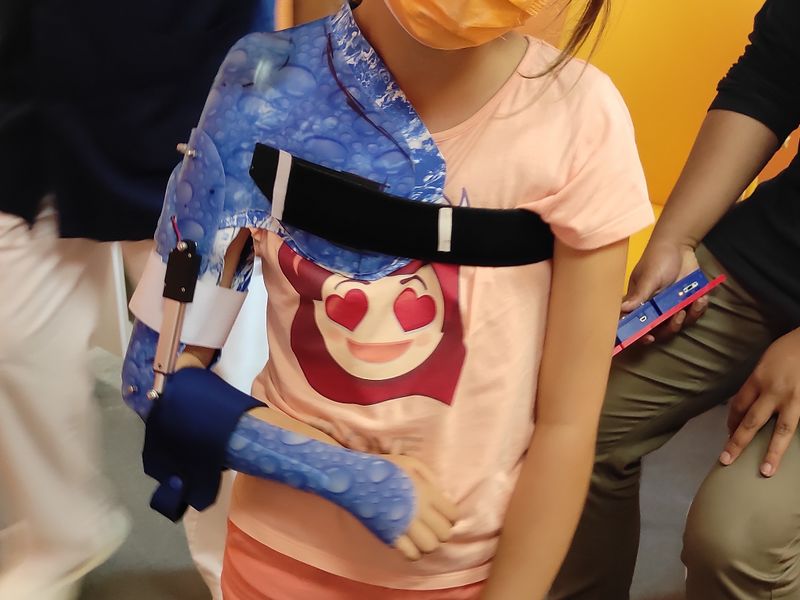This was the first human-computer interaction for healthcare project I made.
It was intended for an 11 years old French child named Emilie.
Before I go into the beautiful details behind it all, here is a video promoting our success :
At the time, I was working at the HumanLab Saint-Pierre
(actually, if on their homepage you see a child holding a weird thing with a motor attached to it, this is Emilie !
I am the man behind her at her right - the man on the left is the chief research engineer of the HumanLab).
The most beautiful aspect of this project is that it is entirely open-source - and that is why I can share all of these details with you.
HumanLabs ?
The open-source thing is actually a common aspect to all HumanLabs projects. If you don’t know what HumanLabs are, you can find more about them here.
HumanLabs basically consist of Fablabs that are specifically dedicated to assistive technologies.
Their goal is to encourage people with physical disabilities to conceive and manufacture their own assistive technologies, using a classic fablab’s equipment (3D printing, open-source electronics, …).
Not only did I had the chance to work within one of them, but I actually worked in a specific one :
the HumanLab Saint-Pierre, located in the South of France, works closely with the Institut Saint-Pierre paediatric hospital, and thus benefits from a dedicated medical team support (occupational therapists, ortho-prosthetists, doctors, …).
This cross-disciplinary team setting was key for the success of this project, as it linked traditional orthosis manufacturing, 3D printing and electronics.
Short context
Emilie is a timid but lovely child who has an injured arm : her right arm is paralysed from her shoulder to her wrist, keeping her from any elbow motion from one side.
Before this project started, she had a traditional mechanical orthosis - she had to lock her injured arm with the other one on one specific position.
My role there was to propose a way to enable the elbow motion in the most natural way possible.
Fortunatly since she could still move her fingers to grip something on her right hand, I was able to propose an arm positioning system using the very same injured limb.
Disney’s magic
After reviewing some interaction technologies, I decided to use capacitive sensing since it also resolved the direction control problem - flexion or extension.
As this project was not ‘childish’ enough, I based the touch sensing technology on Disney Research Lab’s Touché project,
mainly because of its hardware simplicity (only passive components). Hardware simplicity enables efficient scalability and reproductibility at low cost, both essential for any open-source project.
Huge thanks to Danish makers DZL, Mads Hobye and Illutron for their preliminary work on bringing Disney’s research into the maker world.
The final solution I designed consists of a touch-activated mechanism which moves a linear actuator for arm positioning (inspiration from Lorelei’s project). The final control commands uses 2 types of input : short-click or long press. A long press input moves the arm, while a short-click input defines the direction : it goes up if one short click is detected before a long press, goes down is there is no short click before a long press.
If you want full documentation on this, you can directly head to this link. For non-french speakers, source files are on my Github.
